TOXIC SHOCK
UPL chemical inferno ‘more than doubles’ risk for heart disease and lung cancer in parts of Durban
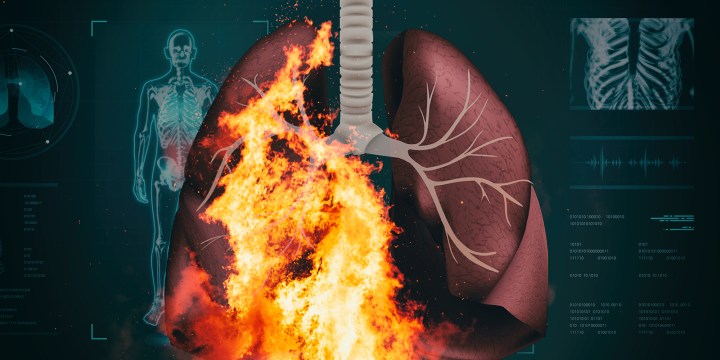
Thousands of people living in the immediate vicinity of the former UPL chemicals warehouse in Durban face twice to three times the risk of developing heart and lung diseases (including lung cancer) after breathing in a cocktail of poisonous chemical fumes during the July riots more than two years ago.
This is just one of the alarming conclusions of a human health risk assessment that recently came to light after the warehouse was torched on July 12, 2021, and then burnt or smouldered for at least nine days before it was finally extinguished.
The study – conducted by toxicology and epidemiology experts at the Witwatersrand and North West universities and the Durban-based Apex Environmental occupational health consultancy – also recommends that the Mumbai-based UPL agrochemicals giant should commission a series of comprehensive human sampling checks and long-term health studies.
The new health surveillance scheme – including biological samples, urine and other pesticide-marker tests – should investigate whether the worst-exposed communities face a range of other potential health risks ranging from respiratory and skin problems to heart, kidney, liver or eye damage.
The authors acknowledge that their study was weakened by the lack of comprehensive air sampling in the immediate aftermath of the July riots, but they have nevertheless red-flagged several residential areas near the gutted Cornubia warehouse.
These include several “fence-line” residents of the Prestondale/Woodlands/Izinga area of Umhlanga and the informal settlement of Blackburn village.
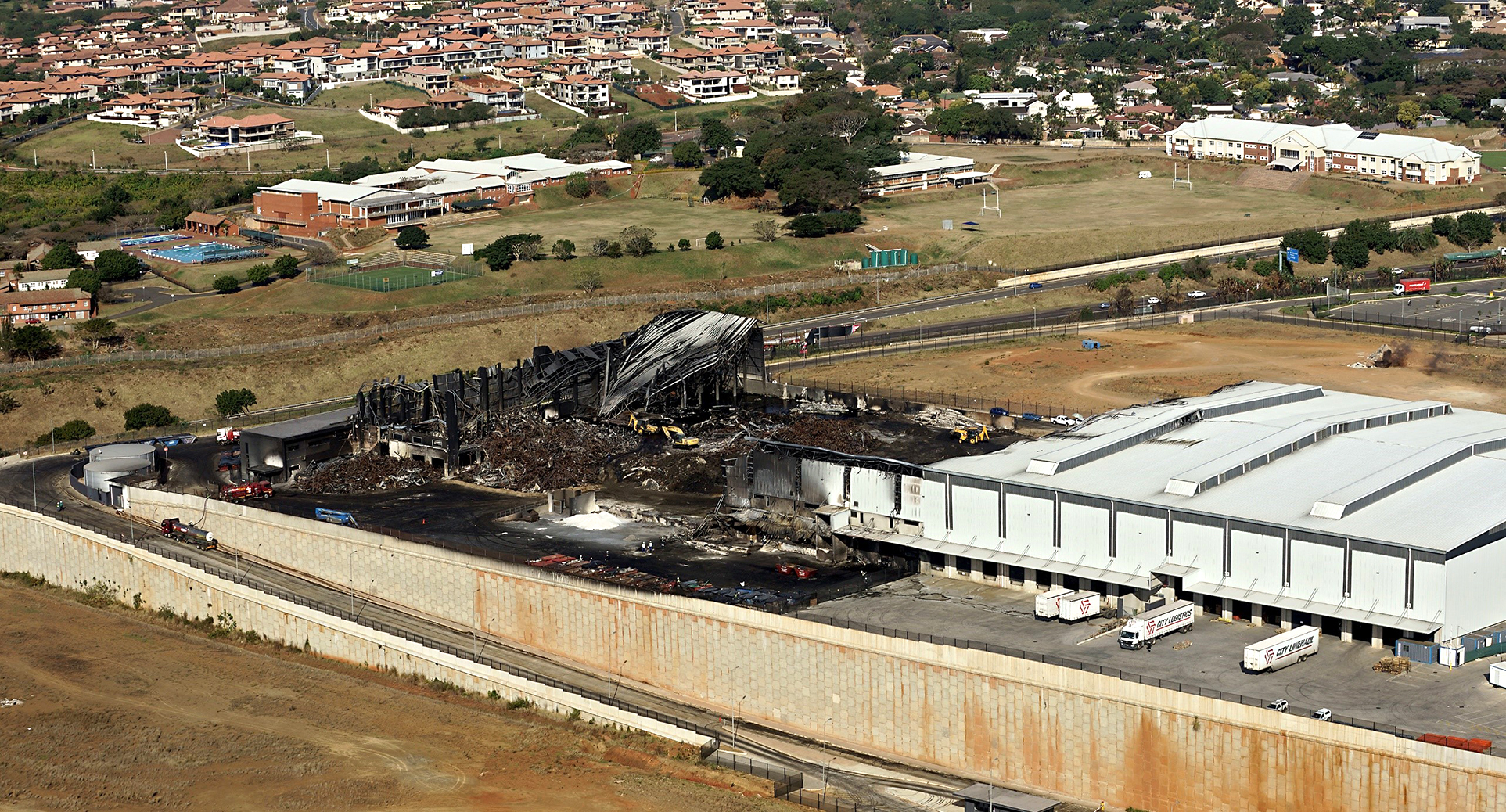
Homes and schools in the Prestondale/Izinga area clustered around the old UPL facility. (Photo: Steve McCurrach / The Bateleurs Flying for the Environment)
The exact number of residents living in these areas is not stated in the study, but Blackburn village alone has more than 3,500 residents, while the 2011 population census estimated that there are more than 24,000 people in the greater Umhlanga area.
The study also notes that toxic fumes from the fire and smouldering phase may have affected a much larger area of the city – possibly beyond a 10km radius of the warehouse – and that this could have caused or aggravated respiratory problems and other acute health impacts.
In some cases, the calculated hazard quotients suggest potential (but much lower) risks for other forms of non-cancer health impacts stretching as far as Verulam, La Lucia, Umdloti or Mt Edgecombe.
An exacerbating feature was the fact that many residents were confined to their homes during the July riots or were out patrolling smoke-polluted residential streets as part of neighbourhood watch schemes.
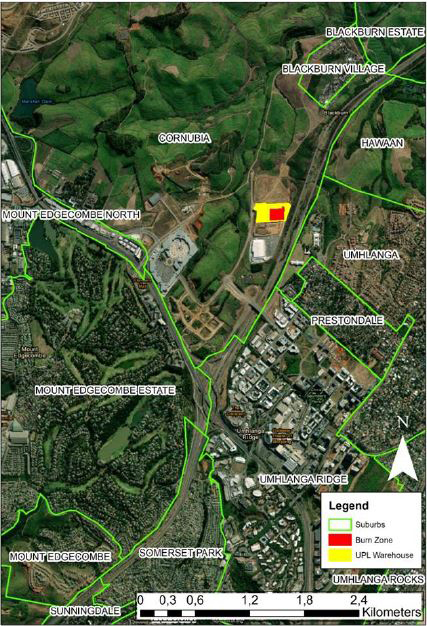
UPL and neighbouring residential areas. (Image: Apex report)
“This led to many people of both sexes, young and old, being exposed to the emissions from the fire.”
Remarkably, the latest health risk study was completed eight months ago but only published on 12 July on an electronic platform seldom accessed by ordinary members of the public.
It was produced by UPL consultants Apex Environmental, based on specialist advice from North West University toxicologist Prof Mary Gulumian, Wits University epidemiologist Prof Gill Nelson and inputs from a number of air quality consultancy groups.

Prof Gill Nelson. (Photo: Linkedin)

Prof Mary Gulumian. (Photo: National Institute of Occupational Health)
The report suggests that the “relative risks for cardio-pulmonary and lung cancer mortality were increased by a factor of two to three” for residents near Reddam House private school in Umhlanga and in Blackburn village.
Relative risks are defined as the ratio of probability of adverse health events in an exposed group, compared to a group not exposed to high air pollution levels.
Any relative risk exceeding 1 is considered as an increased risk factor, yet the calculated risks are close to 2 in the vicinity of Blackburn and Reddam for cardiopulmonary death, and between 2.4 and 3 for lung cancer mortality.
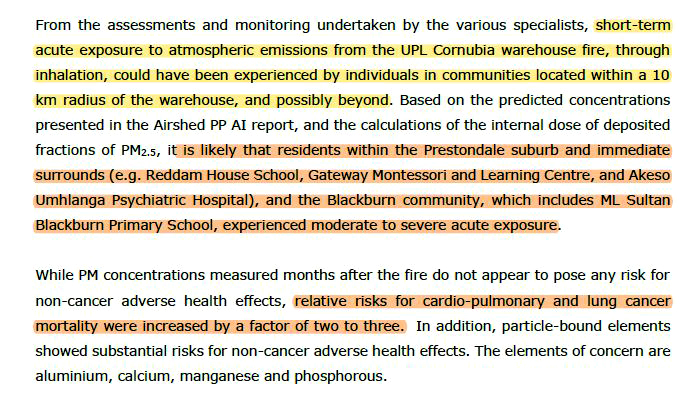
Extract from Apex report conclusions.
Notably, these calculations are based on estimated levels of specks of particulate matter (PM 2.5) in the air following the fire – not on a more comprehensive assessment of the toxic properties of a much wider variety of nearly 5,000 tonnes of pesticides, herbicides and other agrochemical products stored at UPL.
Gulumian and Apex state that due to the widespread civil unrest at the time – and official ignorance about the exact nature of the chemicals stored at UPL until many days afterwards – it had not been possible to measure the exact levels of individual toxic substances or cocktails thereof.
Therefore, based on the limited data available, the study focused mainly on predicted levels of PM 2.5 as a metric.
“This is not to say that all components of PM 2.5 have the same toxicity, but rather that there is not, at present, evidence to quantify the effects of different components separately.”
Gulumian states that a hazard quotient (HQ) below 1 indicates that no adverse health effects were expected as a result of exposure – whereas more than half of the 101 locations included in the study had hazard quotients exceeding 1 (indicating that adverse health effects in people in these locations could be expected as a result of exposure – although this did not necessarily mean that adverse effects would definitely occur).
The areas flagged with the highest hazard quotients include Blackburn Estate (HQ of over 300), Reddam (HQ of 117), the Gateway Montessori and Learning Centre, ML Sultan Blackburn Primary School, Akeso Umhlanga Hospital, Woodlands and Prestondale.
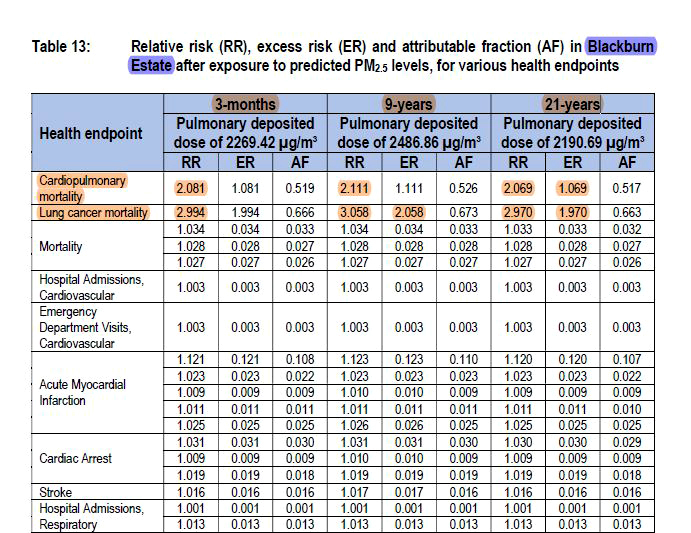
A table showing some of the predicted health risks for residents of the Blackburn informal settlement. Any relative risk estimates exceeding 1 are considered a potential red flag for health. (Image: Apex report)
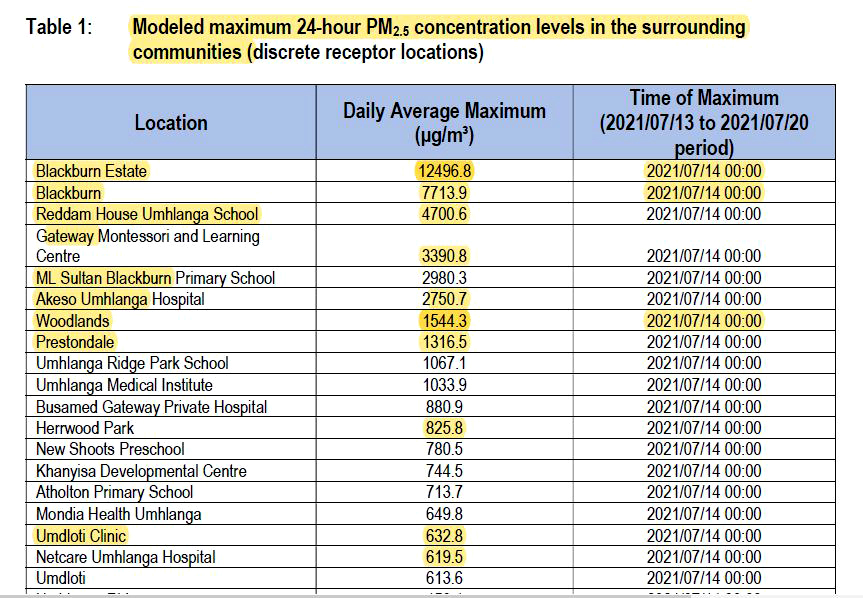
A table showing very high predicted levels of particulate matter pollution in selected locations near the UPL warehouse after the fire. The national standard requires that PM 2.5 pollution levels should not exceed 40 μg/m³ per day. (Image: Apex report)
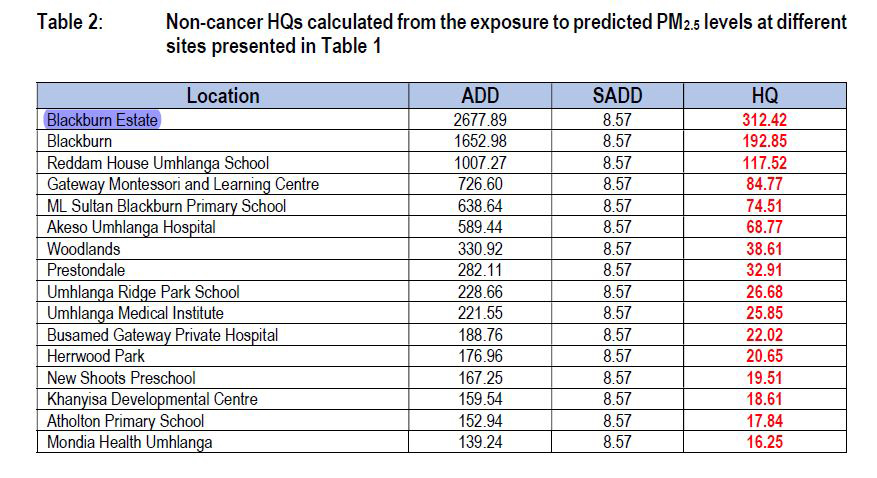
A table showing the calculated hazard quotients (HQ) in locations near the UPL warehouse. Any HQ reading above 1 is considered a red flag. This data suggests HQs were 200 to 300 times higher in some areas closest to the warehouse. (Image: Apex report)
Durban-based epidemiology expert Prof Rajen Naidoo – who was not involved in the study – said he was pleased with the “high level of scientific input” in the report. However, he has expressed concern about some of the methodologies used to predict health risks and has called for an independent peer review of the report.
Naidoo, who heads the Occupational and Environmental Health discipline at the University of KwaZulu-Natal and also conducted studies on health risks to Durban residents living next to the old Engen and Sapref petroleum refineries, said he was “uncomfortable” that the UPL health risks study focused on particulate matter, whereas health risks varied significantly depending on the toxicity of individual pesticides and mixtures thereof.
“PM 2.5 is important as a carrier of pollutants, but the effects are going to be very different (if the study had been able to quantify UPL-specific chemical pollution levels).”
He also noted that new and complex chemical mixtures would have been generated during the UPL inferno – although the relative risks predicted in the Apex/Gulumian studies were nevertheless “extremely high”.
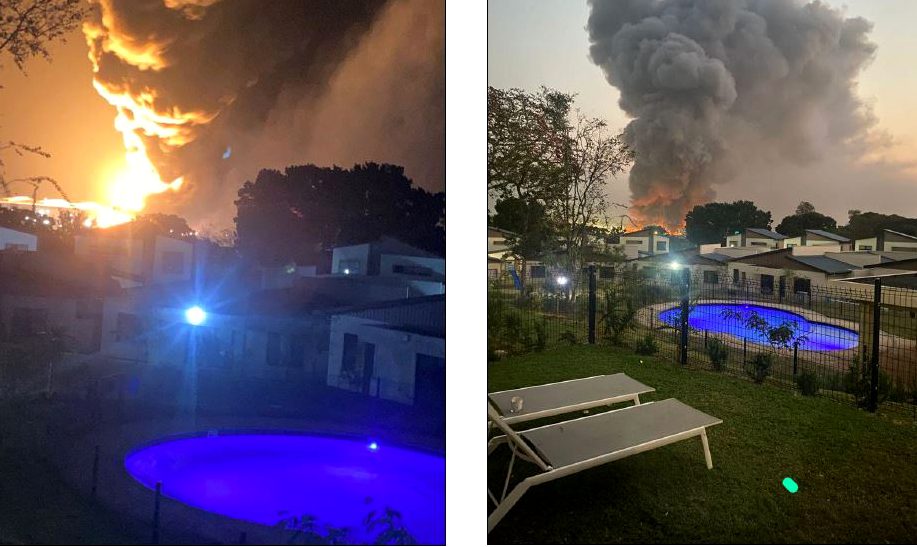
Images of the explosion and smoke shortly after the warehouse was set on fire on 12 July 2021. (Image: Apex report)
Gulumian states in her report that the hazard quotients for more than half of the more than 100 residential sites in the study had indicated “high to exceptionally high risk” for developing non-cancer adverse health effects.
“Exposure to atmospheric emissions generated from the UPL fire is considered to have been episodic and acute. The significance of the acute exposure would have been greater in some areas than others and, therefore, the likelihood of long-term health effects occurring within the communities of concern is considered possible.”
As a result, the authors have recommended a series of new steps to monitor and investigate the possible long-term health effects for communities based on different ages and sexes, genetic predispositions or pre-existing health conditions.
Further investigations and monitoring were needed to ascertain the likelihood of “internal exposure” of individuals.
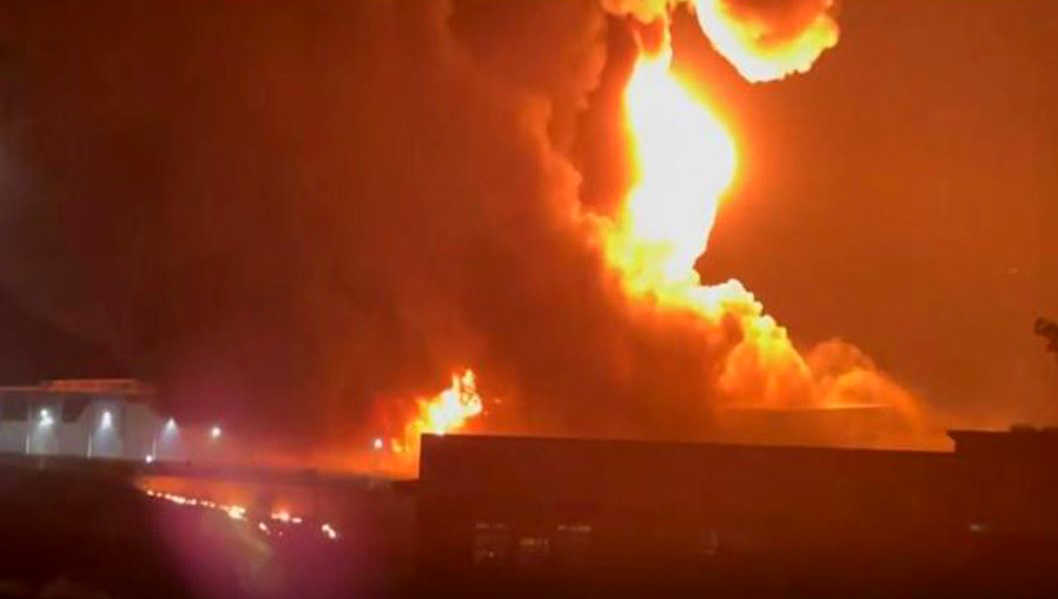
Images of the explosion and smoke shortly after the warehouse was set on fire on 12 July 2021. (Image: Apex report)
This would include lung function tests and eye and skin examinations.
In the immediate vicinity of Blackburn and Reddam, there should be biological monitoring tests to study liver and kidney function based on possible exposure to toxic pesticides, metals and organophosphates, and urine tests to determine exposure to polycyclic aromatic hydrocarbons.
Additionally, the following actions are recommended:
- Establish a comprehensive medical surveillance programme (including biological monitoring) in consultation with the relevant authorities and specialists (toxicologists, epidemiologists and medical professionals).
- Review the biological monitoring results to determine whether a sentinel surveillance programme is required for long-term tracking and monitoring of exposed residents.
- Develop an effective risk communication plan that includes all interested and affected parties.
“The potential for long-term health effects associated with exposure to atmospheric emissions cannot be ruled out. It is recommended that a retrospective cohort study be conducted to assess the prevalence of long-term health effects, and to include:
- All individuals living in the exposed communities at the time of the fire, including children and the elderly.
- The firefighters and others involved in extinguishing the fire.”
It says that a retrospective cohort study includes two groups (one exposed and one not exposed), whose health status is then compared to identify risk factors for “cardiopulmonary disease, lung cancer, asthma, chronic obstructive airway disease, etc.”
Naidoo, who is also part of the Cornubia Fire Multi Stakeholder Forum appointed by government to represent interested and affected communities, has suggested that the new studies should be completely independent of UPL.
He noted that an initial health surveillance project established by UPL was not set up in consultation with the community.
Considering the potential for long-term health damage, the government and UPL should also consider establishing a special trust fund as there are currently no legal mechanisms to compel companies to deal with the long-term aftermath of major pollution events.
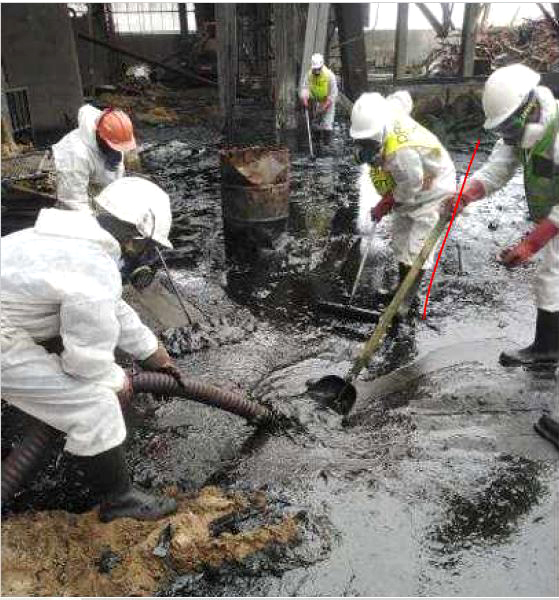
Workers remove chemical sludge from the UPL warehouse. (Image: Department of
Environmental Affairs report)
“How are we going to respond to a problem that may occur several years from now? Who will take responsibility? What is the point of these studies unless the polluter provides resources to look after people’s health over the long term?
“If someone were to develop throat cancer, for example, can you establish that it was a result of exposure two years ago? These are just some of the challenges and more philosophical questions regarding where we go from here.”
Naidoo was also critical of UPL’s failure to properly inform the public.
“We completely missed the boat two years ago. There has been almost zero effective communication from the very outset.”
According to UPL consultants, the company’s official health reporting scheme has recorded just 160 formal public complaints across the city as of January 2022.
Last week, Daily Maverick contacted UPL, inviting the company to respond to the conclusions of the study and to provide details of any action plans and future communication protocols.
In response, UPL said: “In the two years since the arson attack on the Cornubia warehouse during the riots of July 2021, UPL has consistently provided regular reports and information to the authorities which they then publish on their website.
“The HHRA Inhalation Risk to Atmospheric Emissions Report was commissioned by UPL and, upon finalisation, was submitted to the authorities in November 2022. The authorities responded to and accepted the report on 31 March 2023. A subsequent report outlining an action plan is currently under peer review and will be finalised in due course.” DM




















 Become an Insider
Become an Insider
Yep, rules are broken and nobody cares until it goes wrong. Now nobody wants the responsibility for the threatened lives and livelihoods. Small wonder DM wasn’t wanted at UPL/community meetings. Viva, ANC anarchy, Viva!
This should report should have been published before the BRICS meeting.
The consultants used are top notch. But should also consider ingestion and hand to mouth pathways of exposure esp in young children, and tables need confidence intervals around estimates.
But going back to root causes – what was the root causes and how can this be avoided in future.
Was there a failure in critical controls at the facility.
And deeper down why does our society even need all these agrichemicals? – we can grow food without lacing it with pesticides. We do not need GMO modified foods coated with Roundup. These man made chemicals are damaging our health and the environment.
And the effect of the runoff water/chemical mix on the Ohlanga (uMhlanga) River?